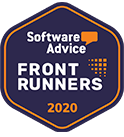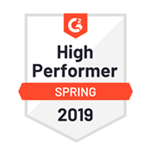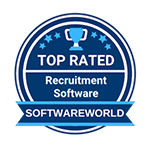There’s no doubt that all developing and successful international businesses require a solid pipeline of qualified talent. Implementing effective global recruiting practices can help you create a high-volume talent pipeline that supports your international business growth. Modern global talent acquisition strategies focus on building sustainable recruitment processes that work across multiple markets and time zones.
The recruitment process is already quite challenging, and global organizations face additional complications and processes to follow. An applicant tracking system serves as an extremely significant component of recruitment success, particularly when managing candidates across different countries and cultures.
Why Global Recruiting Strategy Matters More Than Ever
To create a valuable international recruiting environment, global business leaders must consider investing in advanced recruiting software and comprehensive talent acquisition platforms. The competitive landscape for top talent has intensified, making strategic global recruiting essential for business success.
Companies that excel in international recruiting often outperform their competitors by accessing diverse talent pools and building stronger, more innovative teams. A well-executed global recruiting strategy enables organizations to tap into specialized skills that may not be available in their local markets.
1. Streamlined Recruiting Management
Even though global businesses need several different workflows and procedures, you can still systematize the processes among different locations. Streamlining your recruiting efforts to one single platform model enables you to analyze the complications that appear due to managing locations around the world.
Implementing Unified Recruiting Software Solutions
Modern recruiting software platforms offer centralized management capabilities that allow HR teams to maintain consistency across all international offices. These systems provide standardized workflows while accommodating local compliance requirements and cultural preferences.
The key to successful streamlined management lies in selecting an applicant tracking system that can handle multiple languages, currencies, and regulatory frameworks simultaneously. This approach reduces administrative overhead while improving the candidate experience across all markets.
2. Centralized Candidate Database
With organized recruiting practices, you can access a well-rounded view of hiring trends by analyzing candidate profiles available globally. Candidate profiles consist of information-rich data that provides valuable insights into talent availability and market conditions.
Leveraging Data for Global Talent Acquisition
Utilize this data to scrutinize and progress your global recruiting efforts by identifying patterns in successful hires across different regions. A centralized database enables recruiters to discover internal candidates who might be suitable for positions in other locations, promoting internal mobility and career development.
Advanced applicant tracking system features allow for sophisticated candidate matching based on skills, experience, and cultural fit, making it easier to identify the best candidates regardless of their geographic location.
3. Uphold International Compliance for Global Recruiting
Having international talent in your team requires strict attention to compliance requirements. Global organizations face the challenge of staying compliant with multiple legislations from around the world, including GDPR and other data protection regulations.
An internationally accepted platform for global recruiting can assist businesses to function more effectively and securely while maintaining compliance across all jurisdictions. This includes proper handling of candidate data, ensuring equal opportunity practices, and adhering to local employment laws.
International recruiting compliance extends beyond data protection to include visa requirements, work authorization processes, and cultural sensitivity training for recruiting teams. Organizations must stay updated on changing regulations in each market where they operate.
4. Develop a Consistent Candidate Experience
Recruiting globally means competing for top-performing talent across diverse labor markets. A useful technique to address this competition is developing a persistent, branded candidate experience that attracts high-quality candidates to your company.
Creating Memorable Global Talent Acquisition Experiences
The candidate experience should reflect your company’s values while respecting local cultural norms and expectations. This includes providing clear communication throughout the hiring process, offering timely feedback, and ensuring that all touchpoints reinforce your employer brand.
Successful global recruiting strategy implementation requires consistent messaging across all markets while allowing for local customization. Candidates should feel valued and informed regardless of which office or region they’re applying to join.
5. Align Your Recruiting Software for Maximum ROI
Leaders and executives within any company search for technology that positively impacts functionality and the company’s bottom line. Therefore, it’s essential that leaders understand how to utilize each recruiting software tool for acquiring talent and what ROI it offers to the business.
Measuring Success in International Recruiting
Providing leaders with accessibility to key performance metrics will help your company shape the best inclusive international recruiting strategy. These metrics should include time-to-hire across different markets, cost-per-hire by region, and quality-of-hire measurements.
An effective applicant tracking system should provide comprehensive analytics that demonstrate the value of your global talent acquisition efforts. This data helps justify technology investments and guides strategic decisions about resource allocation across different markets.
Building Your Global Recruiting Foundation
Improving your recruiting strategy isn’t something that’s accomplished without a dedicated team and the right technology infrastructure. With never-ending functions to tend to, jobs to fill, and candidates to qualify, take a comprehensive view of your procedures and identify areas for improvement.
Evaluating Your Current Technology Stack
Does your existing recruiting software allow you to view each separate system under one unified platform? Does it offer strong multilingual capabilities, making it easier for your employees to work in their preferred language? If not, you might need to reconsider your current technology solutions.
Modern global recruiting platforms should integrate seamlessly with other HR systems, provide real-time reporting capabilities, and support multiple languages and currencies. These features are essential for scaling your international recruiting efforts effectively.
Conclusion: The Future of Global Talent Acquisition
A quality applicant tracking system remains a critical component for ensuring global recruiting success. As businesses continue to expand internationally, the importance of having robust recruiting software that supports global talent acquisition will only increase.
Organizations that invest in comprehensive international recruiting strategies today will be better positioned to compete for top talent tomorrow. The key lies in balancing global consistency with local flexibility, ensuring that your global recruiting strategy serves both business objectives and candidate expectations across all markets.
By implementing these five strategies and continuously refining your approach based on performance data and market feedback, your organization can build a sustainable competitive advantage in the global talent marketplace.

















